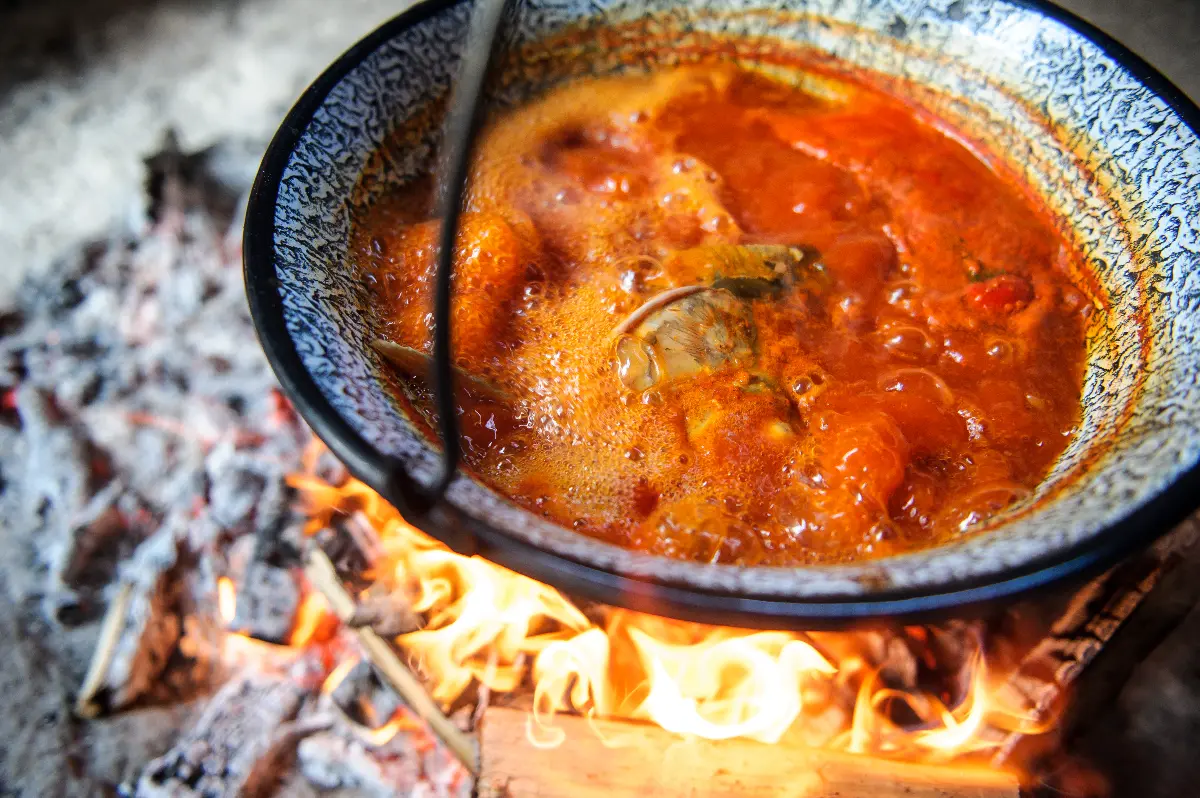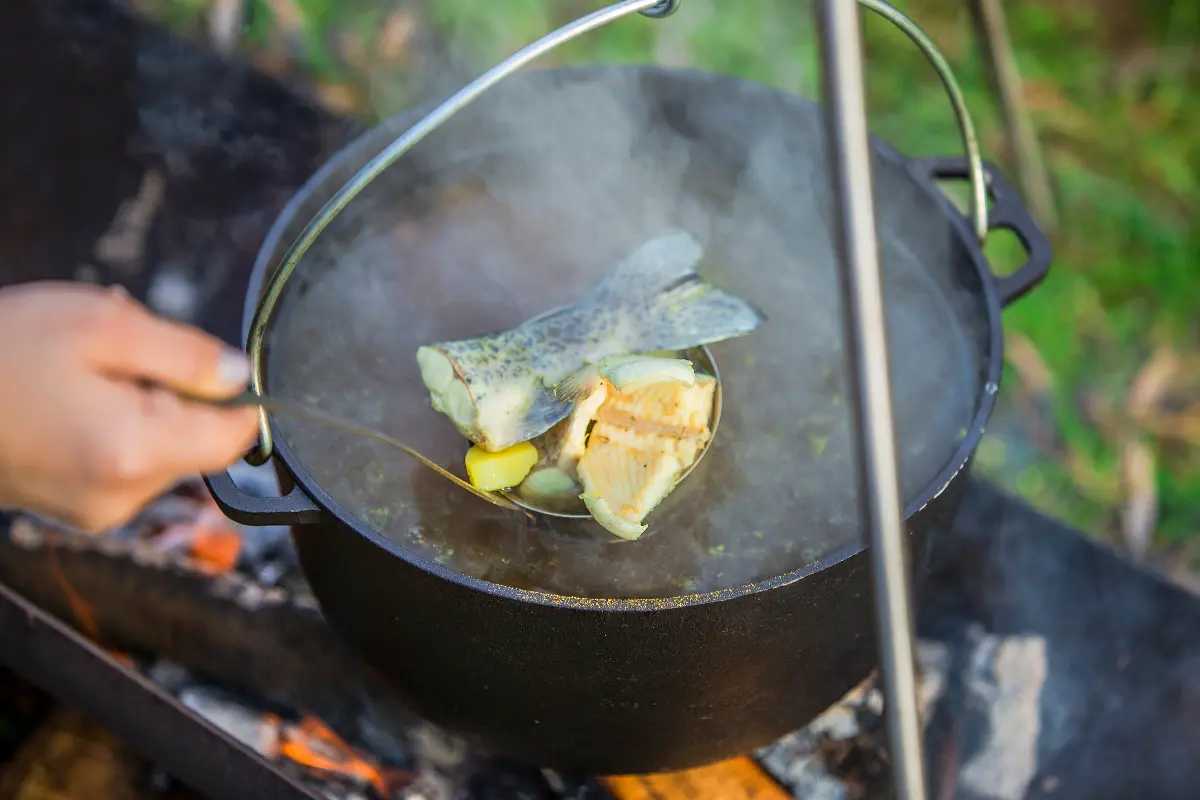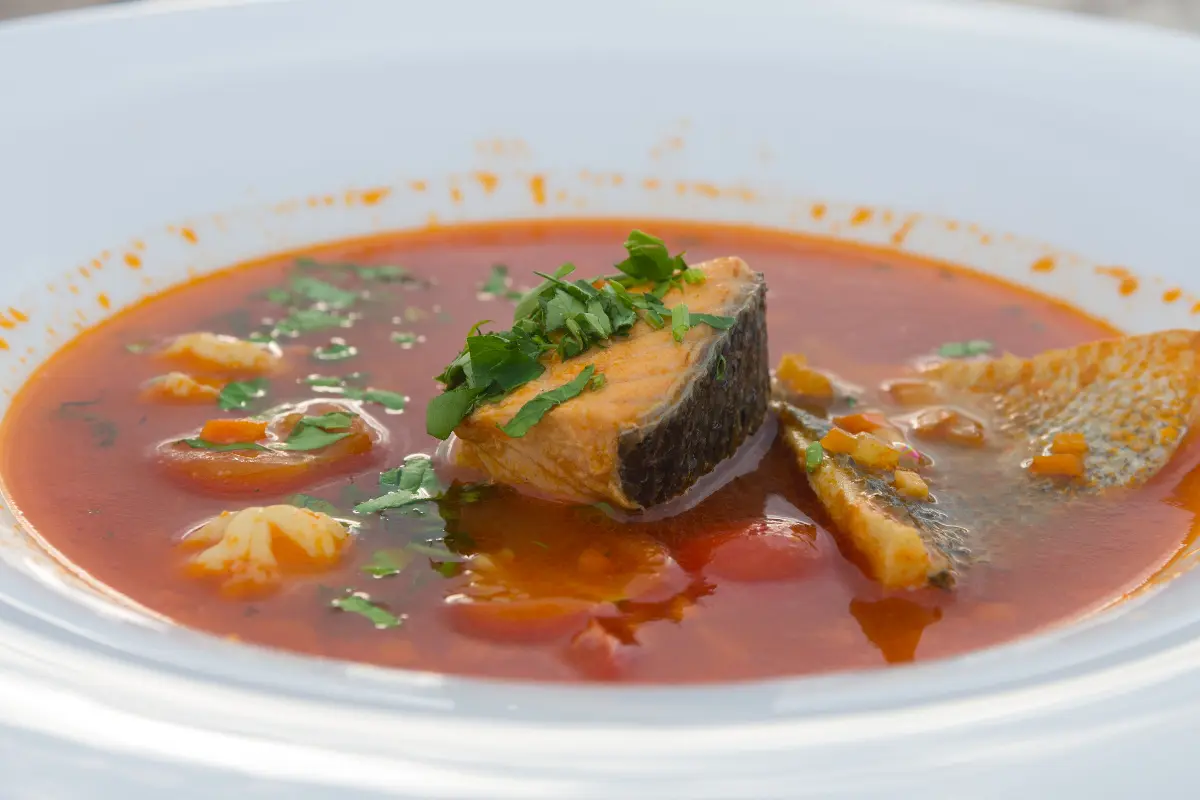
Helyszín címkék:
On the trail of the legendary ‘halászlé’ (the Fisherman’s soup)
Szabó Sára
In Hungary, fish dishes were eaten in all forms, from royal courts to monasteries and cotters. Even in the 17th century, the Hungarian, white-fleshed fish was an appreciated dish, but it owes its fame primarily to its marriage with paprika. Baja anecdote from 1864, that the town owes the annexation of István County to the Fisherman’s soup. According to the story, the negotiations between the two towns were making difficult progress, and the people of Baja invited the village leaders to dinner. Of course, after tasting the Fisherman’s soup, they agreed. However, it was two decades later, thanks to Aunt Rézi, that the "fisherman fish paprikas" became a household name. The recipe of the cookbook writer from Szeged confirms that the original, ancient Fisherman’s soup is made with no straining. In this way, it can be concluded that the birthplace of the Fisherman’s soup is Baja - we'll see why! This can be seen in the per capita fish consumption: the people of Baja eat an astonishing 40 kilos of fish a year. But back to the methods of preparation, of which there are three main groups. From the Lake Balaton, from the Danube and the Tisza: these are not types of fish soup, they are just different recipes. There are differences in the straining between the Tisza and Danube-type. This process is an important part of the Tisza region's fish soup cooking, where it is believed that "the soup is only real when the spoon stops in it". Bread goes with the thick result. According to the Baja recipe, the soup should be thick because it contains several types of fish: mainly catfish, pike, carp, sterlet or sturgeon. In addition to all this, the Fisherman’s soup from the Danube is made with more paprika and, in the end, with match-shaped noodles. Another difference between the two recipes is that in Szeged, the fish meat is cooked only for a short time at the very end of the preparation, so the fish slices are more flexible than the other. In addition to the two ancient rivals, there is also the third recipe from Lake Balaton, which is best known for its fish ratio: one-third carp, one-third small fish and one-third predator fish. The dish is usually enhanced with a glass of white wine.

“The Fisherman’s soup is ready when the thumb and forefinger are stuck together in the steam of the food."
The fish smells of the head, or it all depends on the raw material
Baja, Szeged, Mohács, Balaton: so many houses, so many habits! However, there is no variation in the ingredients: the holy trinity of the classic Hungarian dish is fresh carp, "old" onions and good quality homemade paprika. Choose last year's onions because the flavour of fresh cooking onions is harder to release in the soup. There is no universal truth about the paprika, they can be strong or sweet, but one thing is important: they must be of unimpaired quality! And one more thing: it's delicious when it's cooked over an open fire. The experts even consider the quality of the wood used for cooking to be important, and rightly so, as smoke is one of the most important spices in food. It is said that bone-dry red willow or poplar is best, and even better if you have a Danube driftwood handy.

How did the carp swim into the Christmas menu?
A Hungarian Christmas cannot pass without a Fisherman's soup feast. But how did an essential summer meal end up on the Christmas table? It was probably from the beginning of the 20th century, with the easing of fasting, that Hungarians began to eat fish soup at Christmas. The custom quickly took root, as the fish also has symbolic significance in Christian culture: when Jesus made the apostles fishers of men, the fish became a symbol of the baptised man. No doubt about it, the Fisherman’s soup has its place on the Hungarian Christmas table.






